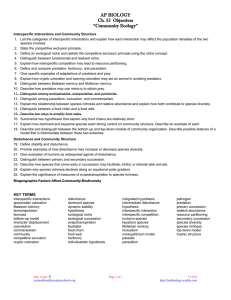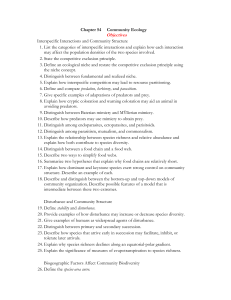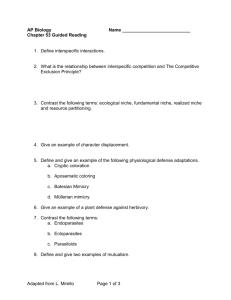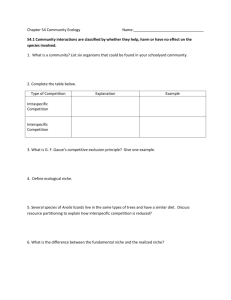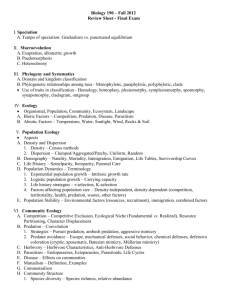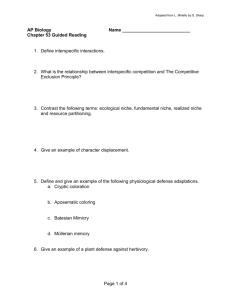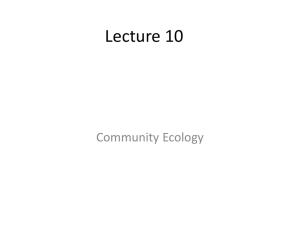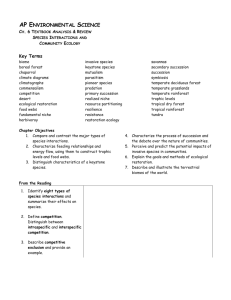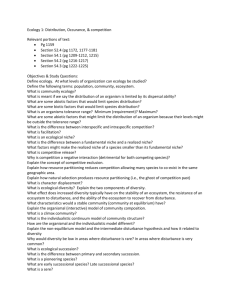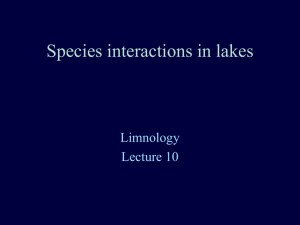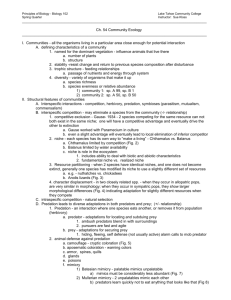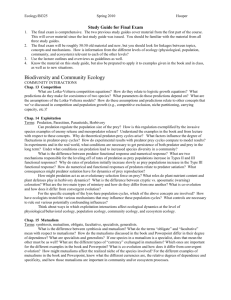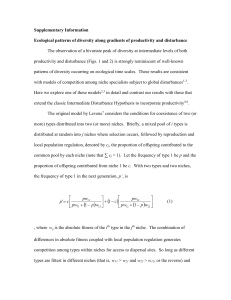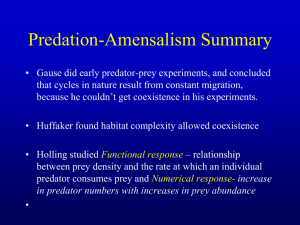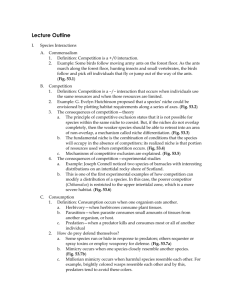Ch. 54 - Ltcconline.net
advertisement
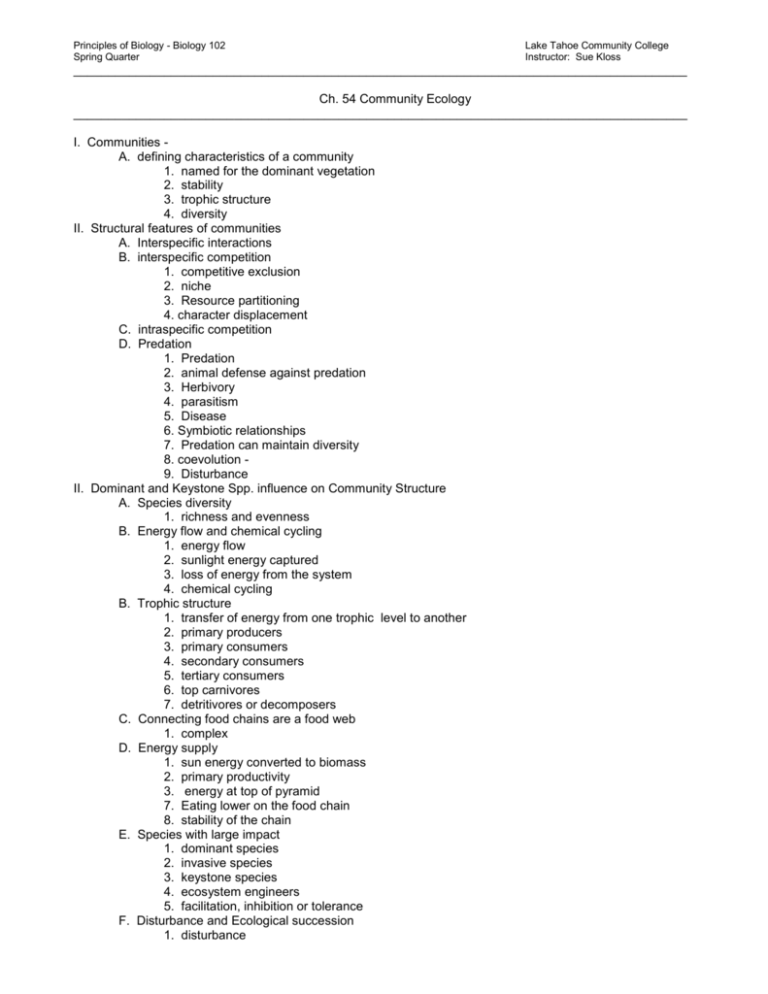
Principles of Biology - Biology 102 Spring Quarter Lake Tahoe Community College Instructor: Sue Kloss ________________________________________________________________________________________ Ch. 54 Community Ecology ________________________________________________________________________________________ I. Communities A. defining characteristics of a community 1. named for the dominant vegetation 2. stability 3. trophic structure 4. diversity II. Structural features of communities A. Interspecific interactions B. interspecific competition 1. competitive exclusion 2. niche 3. Resource partitioning 4. character displacement C. intraspecific competition D. Predation 1. Predation 2. animal defense against predation 3. Herbivory 4. parasitism 5. Disease 6. Symbiotic relationships 7. Predation can maintain diversity 8. coevolution 9. Disturbance II. Dominant and Keystone Spp. influence on Community Structure A. Species diversity 1. richness and evenness B. Energy flow and chemical cycling 1. energy flow 2. sunlight energy captured 3. loss of energy from the system 4. chemical cycling B. Trophic structure 1. transfer of energy from one trophic level to another 2. primary producers 3. primary consumers 4. secondary consumers 5. tertiary consumers 6. top carnivores 7. detritivores or decomposers C. Connecting food chains are a food web 1. complex D. Energy supply 1. sun energy converted to biomass 2. primary productivity 3. energy at top of pyramid 7. Eating lower on the food chain 8. stability of the chain E. Species with large impact 1. dominant species 2. invasive species 3. keystone species 4. ecosystem engineers 5. facilitation, inhibition or tolerance F. Disturbance and Ecological succession 1. disturbance 2. patchiness is healthy 3. intermediate disturbance hypothesis 4. healthy communities can respond 5. regular disturbance G. Human disturbance H. Ecological succession 1. group of species replaced by another group of species 2. primary 3. secondary Wk 9 meeting 2 -Community Ecology Objectives 1. List the categories of interspecific interactions and explain how each interaction may affect the population densities of the two species involved. 2. State the competitive exclusion principle. 3. Define an ecological niche and restate the competitive exclusion principle using the niche concept. 4. Distinguish between fundamental and realized niche. 5. Explain how interspecific competition may lead to resource partitioning. 6. Define and compare predation, herbivory, and parasitism. 7. Give specific examples of adaptations of predators and prey. 8. Explain how cryptic coloration and warning coloration may aid an animal in avoiding predators. 9. Distinguish between Batesian mimicry and Mullerian mimicry. 10. Describe how predators may use mimicry to obtain prey. 11. Distinguish among endoparasites, ectoparasites, and parasitoids. 12. Distinguish among parasitism, mutualism, and commensalism. Wk 10 meeting 1 13. Explain the relationship between species richness and relative abundance and explain how both contribute to species diversity. 14. Distinguish between a food chain and a food web. 15. Summarize two hypotheses that explain why some food chains are relatively short. 16. Explain how dominant and keystone species exert strong control on community structure. Describe an example of each. 17. Define stability and disturbance and the intermediate disturbance hypothesis. 18. Provide examples of how disturbance may increase or decrease species diversity. 19. Distinguish between primary and secondary succession. 20. Describe how species that arrive early in succession may facilitate, inhibit, or tolerate later arrivals.

